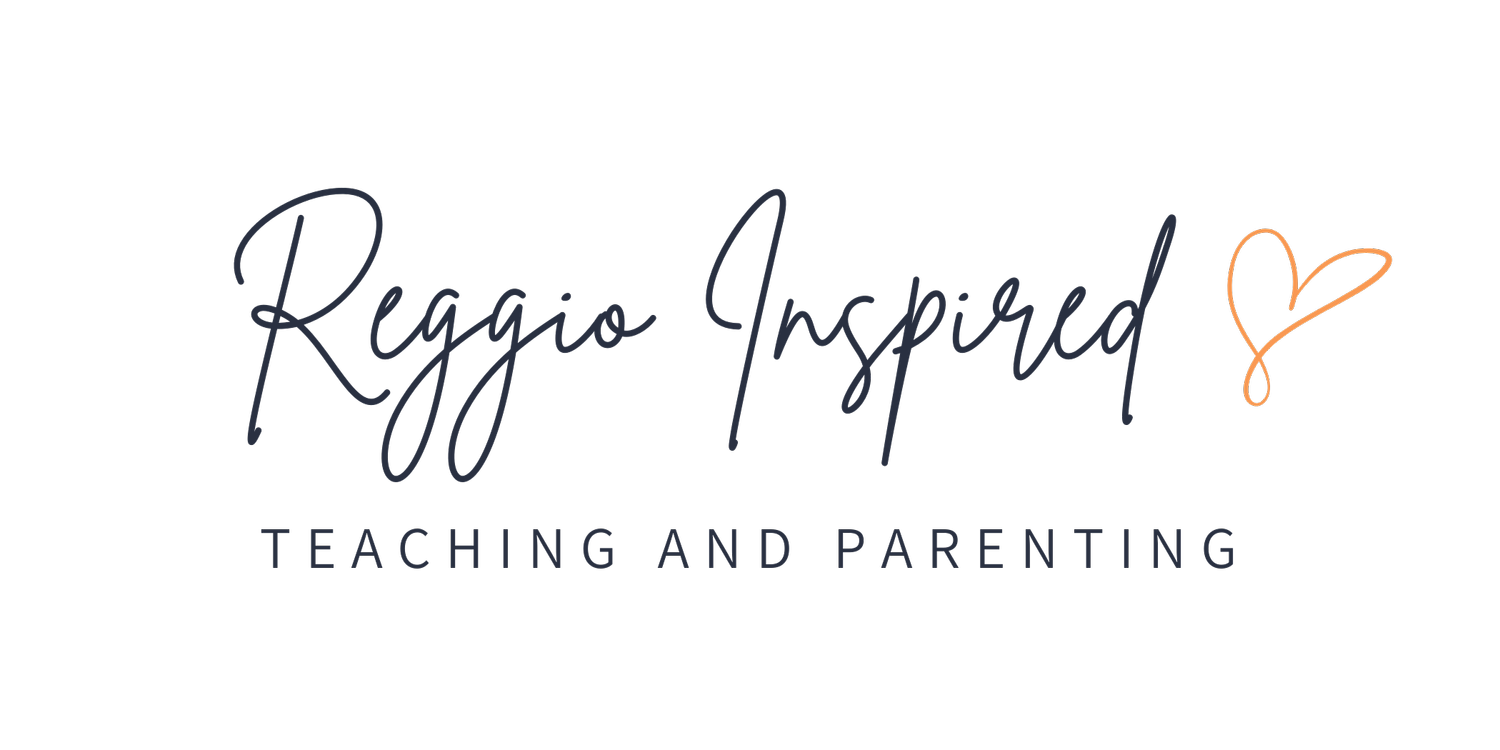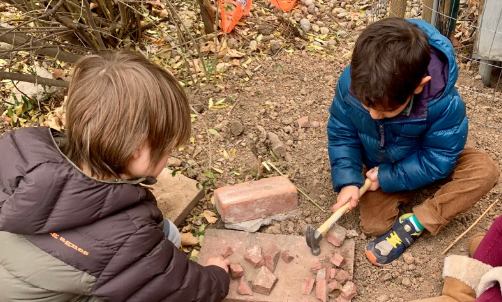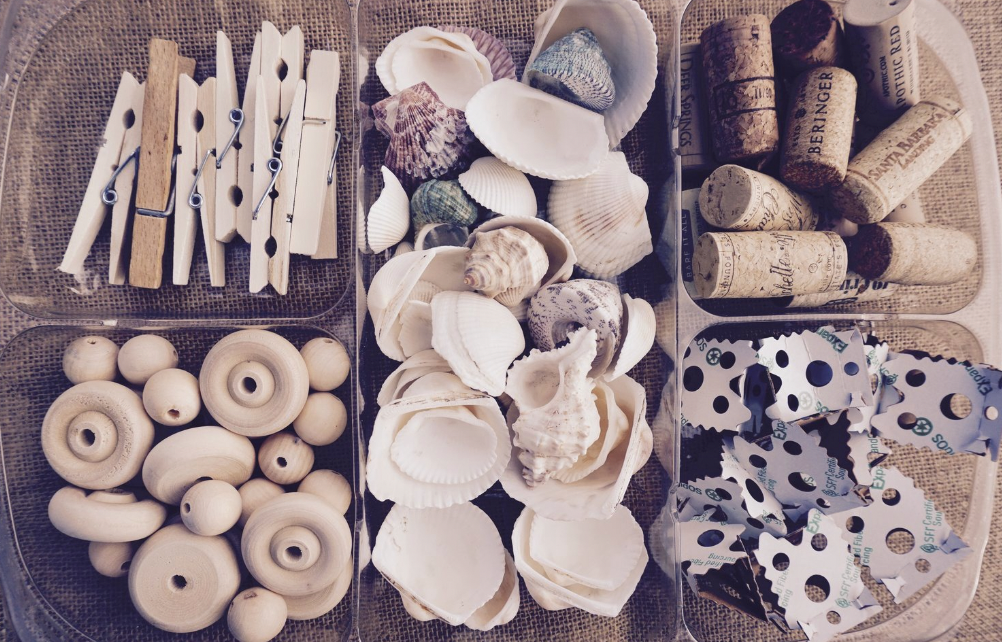What Are Reggio Provocations? A Beginner’s Guide with Examples
At the heart of the Reggio Emilia approach lies the concept of provocations — open-ended experiences carefully crafted with materials to spark curiosity, creativity, and exploration. Provocations serve as gateways to discovery, inviting children to engage with their environment, test ideas, and express themselves in imaginative ways.
This guide will explain what provocations are, how they differ from invitations, and share practical examples you can use in your classroom right away.
Charlotte Jewish Preschool, Charlotte, NC USA
What Are Reggio Provocations?
A provocation is an open-ended learning opportunity created with thoughtfully chosen materials. The goal isn’t to direct children toward one “right” answer, but to encourage exploration, problem-solving, and wonder.
As a teacher, your role is to set the stage and then step back — acting as a curious observer or playful companion as children interact with the materials in unique ways. Whatever unfolds, unfolds!
Provocation with real tools and bricks, Roots & Wings Preschool
Examples of Reggio-Inspired Provocations
Provocations are for children, not décor. Skip the fancy signs and Pinterest-perfect trays. Keep it simple, reachable, and open-ended—and step into your learners’ mindset: What will spark play, imagination, and collaboration in this space?
Art: paints + seashells/rocks → texture, pattern, close looking
Sensory: sand + small animals + gems → habitats, sorting, storytelling
Building: cardboard tubes + cars + blocks → ramps, force, iteration
Potion play: baking soda + vinegar + soap + food coloring + water → cause/effect, recipe testing
Cozy corner books: a few titles tied to current curiosities → connections, questions, quiet inquiry
Zoo map in blocks: map + animal figures → planning, labeling, spatial thinking
Pre-set scene in blocks: teacher builds a simple bed before students arrive → repair, redesign, narrative play
Dramatic play café: baby dolls at a “restaurant” → roles, menus, social play
Vet clinic: stuffed animals + pretend medical tools (syringes, bandages, tape) → care routines, vocabulary, empathy
Tip: Stand back, observe, and let what you notice today inform tomorrow’s setup. If it works, repeat (or tweak 1–2 elements). If it flops, no stress—reflect, adjust, and try again.
Loose Parts Provocation, Roots & Wings Preschool
Provocations vs. Invitations
While the terms are sometimes used interchangeably, there is a subtle but important distinction:
Provocations are open-ended experiences with no specific outcome in mind. They encourage children to take the lead and explore freely.
Invitations are more intentional prompts, often tied to a theme or project you are studying. For example:
Self-portrait studio: mirrors + art materials during an identity investigation.
Movement course: a simple obstacle path to explore balance and sequencing.
Shared experiment: materials prepped with a guiding question to investigate together.
In short: provocations spark curiosity, invitations guide exploration.
Real-Life Examples of Provocations and Invitations
Explore in-depth Reggio-Inspired provocations and invitations from Roots & Wings Preschool. These examples illustrate how clear materials and setup—paired with the environment as the third teacher—can spark curiosity, sustain inquiry, and support collaboration.
Light & Shadow (Provocation)
Materials: Cardboard box, white tissue/tracing paper, tape, flashlight or small lamp, animal figurines/silhouette cutouts, clip/stand to prop the light, darkened space.
Setup: Tape tissue paper over the box opening to make a “screen.” Turn off the lights and aim the flashlight through the back/side of the box.
What we observed: Children positioned animals behind the screen, experimented with moving them closer/farther to change size, and began narrating scenes. Roles emerged (light operator, puppeteers, audience), and the exploration evolved into a full shadow-play performance.
Teacher language:
“What changed when you moved the animal closer to the light?”
“How could we make two characters talk to each other?”
“Who wants to be the light operator for the next scene?”
Potions (Provocation)
Materials: Baking soda, vinegar, water, a little dish soap, food coloring, droppers/pipettes, small jars or beakers, funnels, measuring spoons/cups, trays, stir sticks, towels/smocks, optional scents (lemon, vanilla) and biodegradable glitter/confetti.
What we observed: Children mixed, measured, and compared “recipes,” noticing that vinegar + baking soda made fizz, and adding a drop of soap created taller, longer-lasting foam. They experimented with order and amounts, discovered new colors, named their potions, and began recording steps so they could recreate favorites.
Teacher language:
“Tell me about your recipe—what did you add first?”
“What changed when you used more vinegar? Less baking soda?”
“What do you predict will happen if we add the soap before the vinegar?”
“How could we write or draw your steps so you can make this potion again?”
Self-Portraits (Invitation)
Materials: Individual printed photo of each child, tabletop mirrors, drawing paper or sketchbooks, pencils/erasers, fine-tip markers, a range of skin-tone crayons/colored pencils/watercolors, clipboards/easels, name labels.
Setup: Place each child’s photo beside a mirror at their seat. Offer a curated palette of skin, hair, and eye tones.
Invitation: “Look closely at yourself in the mirror and at your photo. What shapes, lines, and colors tell your story? Draw a self-portrait that shows how you see yourself today.”
What we observed: Children toggled between the mirror and photo, noticing proportion (eye line halfway down the face), unique details (freckles, curls, glasses), and subtle changes in expression. Many mixed or layered colors to match their skin and hair, added backgrounds or favorite objects, titled their work, and shared identity-rich narratives with peers.
Teacher language:
“What shapes do you notice in your face—oval, circles, triangles?”
“How could you layer colors to match your skin or hair?”
“What expression do you want to show, and how will you draw it?”
Bakery Shop (Provocation)
Materials: Playdough (plain + scented/cocoa/cinnamon), rolling pins, pastry cutters, cookie stamps, muffin tins, cupcake liners, baking trays, spatulas, measuring cups/spoons, timers, aprons/chef hats, oven mitts, clipboards/order pads, pencils, play money/cash register, small boxes/bags for “to-go,” chalkboard/whiteboard for menu, table signs, trays/display stands.
Setup: Children were naturally transporting playdough to the kitchen, so we relocated the playdough station into Dramatic Play and stocked it with bakery tools. We added zones—Prep Counter, Oven, Display Case, Register—and added a blank menu board and order pads. On the first day, I rolled out the dough and did a couple examples with the cookie cutters as a provocation.
What we observed: Children loved this provocation and they played with it for several weeks! They naturally chose roles (bakers, cashiers, customers, delivery), kneaded and rolled “dough,” and invented recipes. They wrote menus, took special orders, used timers for “baking,” set prices, counted change, packaged items, and hosted a grand opening for families. Literacy (labels, tickets, receipts), math (measuring, pricing, counting), and social negotiation (turn-taking, problem-solving) all emerged.
Teacher language:
“What will you name your bakery? How will customers know what you sell?”
“How much does a cookie cost?
“Who will take orders and who will work the oven? How will you switch jobs?”
“Can we write your recipe so you can make it again tomorrow?”
Geode Science Experiment (Invitation)
Materials: Clean dry eggshell halves, white glue (thin coat), alum or borax powder, very hot water (adult-handled), food coloring, jars/cups, spoons, trays, magnifiers, labels.
Invitation: “Let’s mix a ‘crystal potion’ (a supersaturated solution) and paint the eggshells. What do you predict will happen as the water cools and evaporates?”
What we observed: Children coated shells, mixed colored solutions, and waited. By the next day, tiny crystals formed; over several days they grew into sparkling “geodes.” Children compared sizes and colors, noticed faster growth in warmer spots, and recorded daily changes with drawings.
Teacher language:
“What changed since yesterday? Where do you see the first crystals?”
“How might adding more alum/borax—or changing the temperature—affect the growth?”
“What could we do to grow larger crystals next time?”
What I Wish I’d Known About Reggio Provocations
When I first dove into provocations, I was honestly confused. Pinterest made it look like every setup had to be perfectly styled and elaborate. Here’s the truth: effective provocations can be simple, repeatable, and imperfect—and that’s more than okay.
If it works, repeat it (or tweak 1–2 things).
When children are deeply engaged, bring the same provocation back the next day. You can keep it as-is or make tiny changes—swap a tool, add a new material, change the scale or surface. Repetition builds mastery and extends inquiry. Sometimes I might leave provocations up for several weeks with small iterations if they were engaged.Pinterest-pretty is optional. Clarity isn’t.
Provocations don’t need to be “curated.” Often, a clean, uncluttered space with clearly introduced materials (and a simple prompt) is enough to invite rich exploration. Think: one tray, a few well-chosen tools, and visible room to work.If it flops, you didn’t fail—you learned.
Some setups won’t land. Don’t be hard on yourself. Ask why: Was it too busy? Too hard? Not connected to current interests? Use that insight to reframe the invitation to learn tomorrow with a small adjustment. That reflective loop is the practice.
Charlotte Jewish Preschool, Charlotte, NC USA
Why Provocations Matter in Reggio-Inspired Classrooms
Provocations are more than pretty setups — they represent a mindset shift:
Moving away from activities with fixed outcomes
Embracing the unexpected discoveries children make
Encouraging creativity, collaboration, and critical thinking
Honoring each child’s unique learning journey
By incorporating provocations, you create an environment where learning is fueled by curiosity and guided by the child’s voice.
Charlotte Jewish Preschool, Charlotte, NC USA
Final Thoughts
The most powerful provocations are those that invite children to wonder, explore, and make meaning in their own ways. When paired with thoughtful observation and documentation, provocations help teachers see learning in action and design responsive next steps.
Curious to learn more about how to bring provocations to life in your classroom? Our Reggio-Inspired Educator’s Course and Teacher Playbook provide practical tools, real classroom examples, and step-by-step strategies to help you integrate the Reggio philosophy with confidence.
About the Authors:
Megan Haynes and Priscilla Patti are two highly experienced and qualified early childhood educators who are passionate about teaching in a Reggio-Inspired way. They firmly believe in its transformative power in early childhood education. The authors share firsthand accounts of their experiences utilizing the Reggio Emilia Approach in Fort Collins, Colorado.











